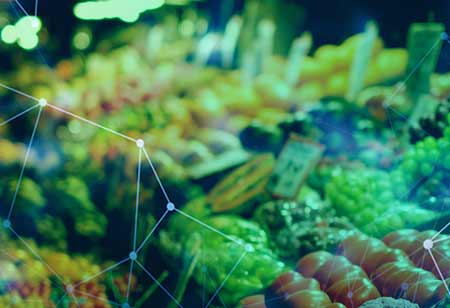Thank you for Subscribing to Food Business Review Weekly Brief
- Home
- Topics
- Alternative Proteins and Plant Based Food
- Beer and Wine
- Canned Beverages
- Coffee And Tea
- Food and Beverage Consulting
- Food and Beverage Financial Service
- Food And Beverages Marketing
- Food Distributors
- Food Ingredients
- Food Sustainability
- Plant Based Food and Beverages
- Seafood Suppliers
- Supplement Manufacturing
- Wine Investment
- News
- Vendor Viewpoint
- CXO Insights
- Conferences
- Newsletter
- CXO Awards
-
Various Approaches to Addressing Food Safety Testing Challenges
Food safety testing is essential to maintaining the health and well-being of consumers

By
Food Business Review | Tuesday, February 01, 2022
Stay ahead of the industry with exclusive feature stories on the top companies, expert insights and the latest news delivered straight to your inbox. Subscribe today.

Consumers' health and well-being depend on food safety testing, and food manufacturers' quality assurance systems rely on it.
FREMONT, CA: Food safety testing is essential to maintaining the health and well-being of consumers and is an integral part of food product manufacturers' quality assurance procedures. Increasing numbers of consumers recognize the importance of testing food, how it is transported, and production facilities before it enters their homes and, ultimately, their bodies.
Food safety testing encompasses numerous facets. The United States Department of Agriculture defines food safety as the condition and practices that preserve the quality of food sent to consumers and prevent contamination from potentially hazardous materials/compounds and bacteria/viruses that could make consumers ill.
Environmental monitoring assessments of food manufacturing facilities are conducted. Microbiology testing identifies living organisms and pathogens that can negatively impact consumers and food quality. Other contaminants, such as heavy metals, will be detected by chemistry testing and affect consumers and the product's quality.
Given the staggering cost of food recalls to businesses, they must do everything possible to mitigate this risk. The scope of food safety testing is expansive. Still, it must be so to give consumers confidence in the products they purchase and protect businesses from contamination-related losses.
Indicator Organisms Serve as Warning Signs: Pathogen testing is essential to food safety and quality assurance. In situations where more frequent or extensive testing is not feasible, testing for indicator organisms in food can be an early warning sign for potential contamination or spoilage situations. Nonetheless, testing large areas or product batches may not always be possible.
Indicator organisms in food are typically easier to detect than pathogens. They can be used to assess the quality of the food product (i.e., for spoilage) and the environment's safety. Indicator organisms typically point to microbial loads and contamination sources within a production environment. Among them are coliforms, Enterobacteriaceae, yeasts, molds, and lactic acid bacteria (LAB).
Measuring the total viable count on the surface is the most common method for detecting indicator organisms. This is a good indicator of hygiene in a food production area, as it describes the number of colony-forming units of the organism within a specified area. This is frequently synonymous with the aerobic count, which modifies this method by indicating the number of colony-forming units present in a sample during incubation at optimal growing temperatures. This method can help determine the presence of microbes and their optimal growth conditions.
Using air testing, you can also identify the presence of indicator organisms within the facility's environment. It is essential to remember that these organisms can spread through the air, a process accelerated by heavy traffic and air systems that circulate air indoors.
Mycotoxins are a Persistent and Hardy Danger: Dangerous toxins may be present in food crops at any stage of the supply chain; therefore, it is crucial for the public's health that food safety is tested regularly. Mycotoxins are a type of naturally occurring toxin that exists in a variety of agricultural products. Mycotoxins are produced by certain types of mold and can be found in farm products.
Mycotoxins in food products are a serious concern, as mold commonly affects cereals, fruit, soybeans, cereals, wheat, and coffee beans. Mycotoxins are capable of causing acute poisoning as well as long-term effects such as certain types of cancer, immune deficiency, and organ damage and can be fatal to humans and animals. Human exposure occurs either directly through the consumption of infected foods or indirectly through the consumption of infected animals or animal byproducts, such as drinking milk from a cow that consumed contaminated grains.
Molds that produce mycotoxin can penetrate the food's surface and grow before or after harvest, during storage, or on or in the food itself under warm, moist, and humid conditions. Mycotoxins in food can be mitigated through testing, inspection, drying, and storage procedures. While there are standards for the maximum safe level of mycotoxins in nutrition, farms, food processors, distributors, and other businesses in the food industry must conduct proper testing due to the ability of mold to penetrate food products.
Mold toxins are naturally occurring contaminants, which makes it challenging to analyze mycotoxins in food. Mycotoxins are resistant to cooking and freezing, unlike many other pathogens and toxins. In addition, they are not distributed uniformly throughout products and can cause severe damage even at low concentrations. Due to these factors, it is crucial to sample and test products frequently and accurately.






